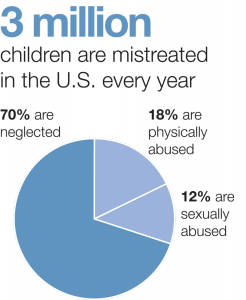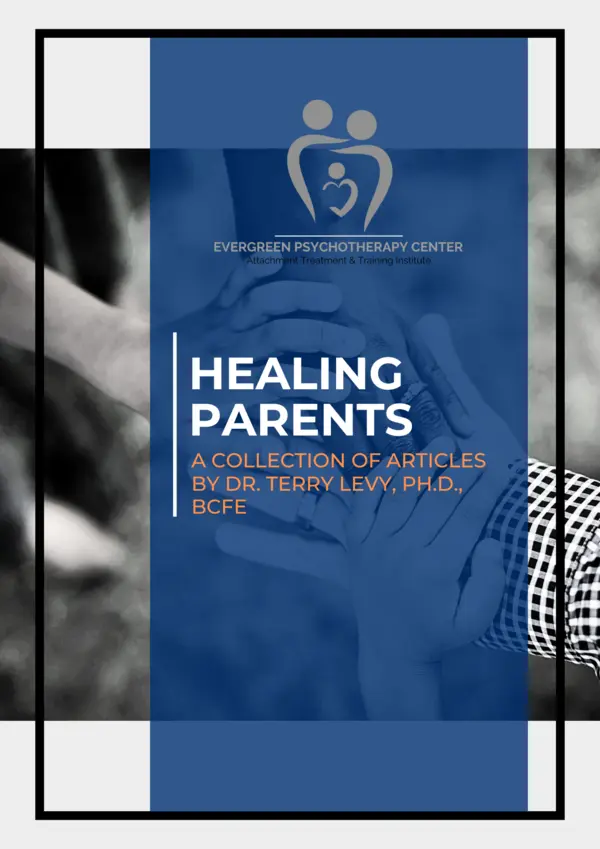
Disrupted and anxious attachment not only leads to emotional and social problems, but also results in biochemical consequences in the developing brain. Infants raised without loving touch and security have abnormally high levels of stress hormones, which can impair the growth and development of their brains and bodies.
The neurobiological consequences of emotional neglect can leave children behaviorally disordered, depressed, apathetic, slow to learn, and prone to chronic illness. Compared to securely attached children, attachment disordered children are significantly more likely to be aggressive, disruptive and antisocial. Teenage boys, for example, who have experienced attachment difficulties early in life, are three times more likely to commit violent crimes.
Disruption of attachment during the crucial first three years can lead to what has been called “affectionless psychopathy”, the inability to form meaningful emotional relationships, coupled with chronic anger, poor impulse control, and a lack of remorse.
Attachment disorder’s ill effects
Attachment disorder is transmitted intergenerationally. Children lacking secure attachments with caregivers commonly grow up to be parents who are incapable of establishing this crucial foundation with their own children. Instead of following the instinct to protect, nurture and love their children, they abuse, neglect and abandon. The situation is out of control. Consider the following:
- 81% of child victims were maltreated by a parent acting alone or with someone else.
- The youngest children are most vulnerable; those under 1 had the highest rates of abuse; almost 50% of all child fatalities caused by maltreatment were under 1 year of age.
- Up to 65% of maltreated children develop PTSD; as many as 90% of infants and children acquire anxious and disorganized attachment patterns.
- Maltreated children are 53% more likely to be arrested as a juvenile and 40% more likely to commit a violent crime.
- 50 to 80% of all child abuse cases involve drug and/or alcohol abuse by parents or caregivers.
- Poverty plays a role; children in families with annual incomes below the poverty line were 45 times more likely to suffer neglect and 60 times more likely to die from maltreatment.
- The fiscal cost of childhood maltreatment, including mental health, medical, social services, and justice system services, is estimated at $104 billion per year.
The prevalence of mental health problems is particularly high among maltreated children place in out-of-home care. Compared with their nondependent peers, children who become involved in the child welfare system (e.g., foster care) are more likely to exhibit aggressive and antisocial behavior, use drugs and alcohol, and enter the juvenile justice system (Hazan et al. 2009). These children must cope with the traumas resulting in placement as well as the stress of adjusting to life in new environments.
Problems grow with age
Children who begin their lives with compromised and disrupted attachment (associated with prenatal drug and alcohol exposure, neglect of physical and emotional needs, abuse, violence, multiple caregivers) are at risk for serious problems as development unfolds, including:
- Low self-esteem;
- Needy, clingy, or psuedoindependent;
- Decompensate when faced with stress and adversity;
- Lack self-control; biologically and behaviorally dysregulated;
- Unable to develop and maintain friendships;
- Alienated from and oppositional with parents, caregivers, and other authority figures;
- Antisocial attitudes and behaviors;
- Aggression and violence;
- Difficulty with genuine trust, intimacy, and affection;
- Negative, hopeless, and pessimistic view of self, family, and society;
- Lack empathy, compassion, remorse, and prosocial morality;
- Behavior and academic problems at school;
- Perpetuate the cycle of maltreatment and attachment disorder in their own children when they reach adulthood;
- Incapable of secure adult-to-adult attachment relationships.
 Disrupted and anxious attachment not only leads to emotional and social problems, but also results in biochemical consequences in the developing brain. Infants raised without loving touch and security have abnormally high levels of stress hormones, which can impair the growth and development of their brains and bodies.
The neurobiological consequences of emotional neglect can leave children behaviorally disordered, depressed, apathetic, slow to learn, and prone to chronic illness. Compared to securely attached children, attachment disordered children are significantly more likely to be aggressive, disruptive and antisocial. Teenage boys, for example, who have experienced attachment difficulties early in life, are three times more likely to commit violent crimes.
Disruption of attachment during the crucial first three years can lead to what has been called “affectionless psychopathy”, the inability to form meaningful emotional relationships, coupled with chronic anger, poor impulse control, and a lack of remorse.
Disrupted and anxious attachment not only leads to emotional and social problems, but also results in biochemical consequences in the developing brain. Infants raised without loving touch and security have abnormally high levels of stress hormones, which can impair the growth and development of their brains and bodies.
The neurobiological consequences of emotional neglect can leave children behaviorally disordered, depressed, apathetic, slow to learn, and prone to chronic illness. Compared to securely attached children, attachment disordered children are significantly more likely to be aggressive, disruptive and antisocial. Teenage boys, for example, who have experienced attachment difficulties early in life, are three times more likely to commit violent crimes.
Disruption of attachment during the crucial first three years can lead to what has been called “affectionless psychopathy”, the inability to form meaningful emotional relationships, coupled with chronic anger, poor impulse control, and a lack of remorse.

